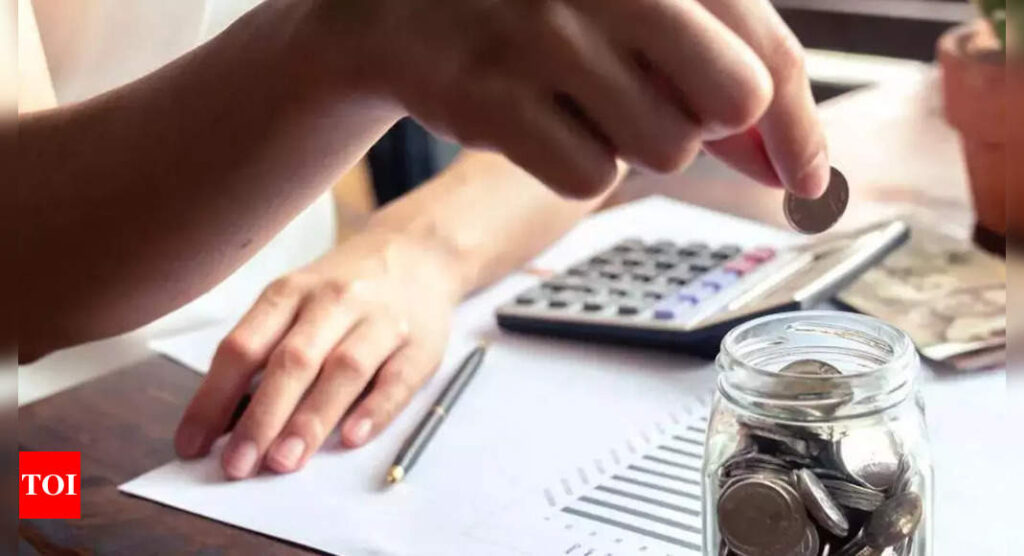[ad_1]
Household financial assets, including bank deposits, cash and equity investments, after deducting debt servicing and consumption, eased to 5.1% of gross domestic product in the fiscal year ended March from 7.2% in the previous year, according to the latest data from the Reserve Bank of India.
That level, according to calculations by IndusInd Bank Ltd.’s Chief Economist Gaurav Kapur, is the lowest since the fiscal year ended March 2007, and will crimp resources for the rest of the economy. India’s government depends on these savings to finance capital investments on physical assets such as infrastructure, machinery and equipment.
While savings increased for many households globally during the pandemic, most used up the resultant extra spending power as Covid curbs ended. That contributed to the recovery of economies the world over, and in part, to higher inflation.
India’s own consumer price-growth, which has remained above the Reserve Bank of India’s 2%-6% target range for 14 of the past 20 months, has kept inflation-adjusted real wages stagnant, reducing the ability of households to save. Falling household savings can narrow the avenues available to the government to plug its funding gap, say economists.
“Household financial savings not keeping pace with growth is a matter of concern”, said Saugata Bhattacharya economist at Axis Bank Ltd. “Without adequate domestic savings, funding the needed investment will require large foreign capital, which is often volatile.”
For now, India’s GDP is projected to grow 6.1% in the current fiscal year ending March, making it the quickest pace among major economies. To keep that world-beating title, India needs to sustain investment spending, and not just rely on debt-fueled private consumption as an engine of growth.
More than 300 million Indian households have seen debt levels increase following aggressive lending tactics by banks after the pandemic. Record low rates offered to meet pent-up demand doubled banks’ retail loan portfolio between 2019 and now, building up some distress in the process. Credit card spent hit a record high of 1.47 trillion in May.
The rise in financial liabilities with falling assets levels could be a sign of rising inequality.
“The household sector is consuming by borrowing more,” said Rupa Rege Nitsure economist with L&T Finance Holdings Ltd. “This happens when income level stays stagnant but inflation creeps up. The recovery is not broad-based — while a section splurges on luxury goods, others are borrowing to stay afloat.”
[ad_2]
Source link










More Stories
India’S Growth Forecast: S&P ups India’s FY’24 growth forecast to 6.4% on robust domestic momentum
India to remain fastest-growing major economy, but demand uneven: Poll
Jack Ma: Jack Ma gets back into business with ‘Ma’s Kitchen Food’